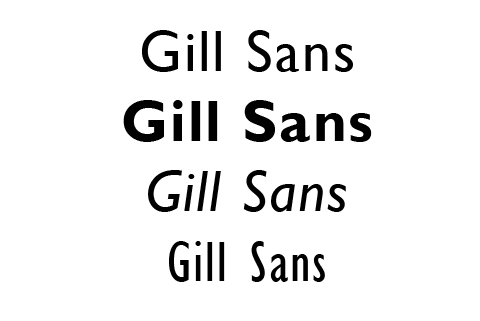

And the r is given a playful point in the stylistic alternates. A ”second“ typeface with its own personal character resulted as stylistic alternates were designed for the letters a e f g l t u in accordance with the uncial scripts of the late antiquity or rather the early Middle Ages. Contrast to the soft round forms is provided by the points of all characters derived from the triangle: v w z, and especially the capitals A M N V W Z. And so a font with pleasant rhythmic proportions was created and is extremely comfortable to read, especially in large amounts of text but, it is also reader-friendly under adverse typographic conditions on the monitor.A terse character is the f, having a shortened ascender and managing without the usual sweeping bow in reading order.The determining element in the appearance of Faber Sans is seen in the wide round forms of b c d e o p q and C D G O Q, and this formal characteristic is even more emphasized with the use of the round a and g of the stylistic alternates. The Roman Capitalis provided the model for the classically proportioned capital letters and the harmonic shapes of the humanistic minuscule for the lower case characters. The »basic typeface« is a sans serif in the classic-modern style of type creations of the early 20th century - godfathered by Futura from Paul Renner and Gill Sans from Eric Gill. Two fonts in one: a classic-modern sans serif appearing in two forms - ”standard“ and a ”stylistic alternate“ with uncial script-orientated characters which give the font a completely different ”look.“A uniqueness of Faber Sans is that it is actually composed of two fonts.
#Fonts similar to gill sans plus
Especially the rounded forms from a, e, f, g and y reflect the handwritten humanistic cursive.Charpentier Sans is comprised of many ligatures, including discretional ones, plus proportional medieval and capital figures for the normal type as well as disproportional tabular figures with a consistent width.Above and beyond the ”normal“ Latin typeface system, small caps are available as an especially elegant form of distinction. Consequently Charpentier Sans always appears with an extremely sharp and clear outline.Charpentier Sans Italique has an even more distinct ductus derived from writing. They create an exciting contrast to the soft flowing forms of the letters and are, to a great extent, conducive to the legibility.

Details resulting from writing with the quill guarantee that the font doesn’t appear too rough and unemotional.Even the tiny, pointed mini serifs contribute to the unmistakable appearance of the font. And thus, a modern serif sans was created emphasizing thick and thin strokes together.Thanks to its traditional form language, Charpentier Sans is very legible, adapts to various forms of content and expresses a kind of calmness and certainty. The contrast between strokes and thin strokes is based on medieval uncial script. Appropriately, its original name was ”Olympia.“The font is intended to embody classic ideals as well as to meet modern demands.The proportions of Charpentier Sans are directly derived from Roman capitals and the humanistic book-face.

A humanistic sans serifThe first version of this font was created in 1994 within the framework of the bid placed by the city of Graz to become the location for the Winter Olympics in 2006.


 0 kommentar(er)
0 kommentar(er)
